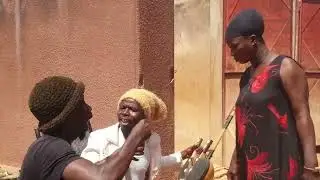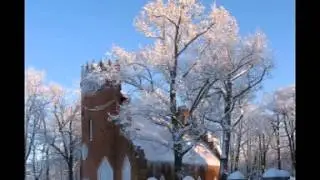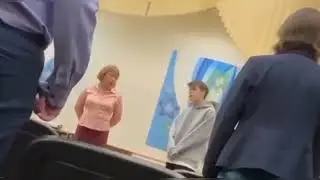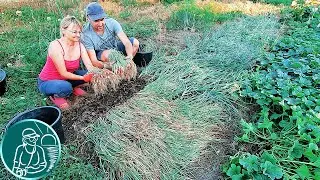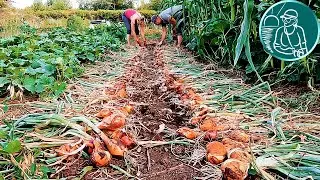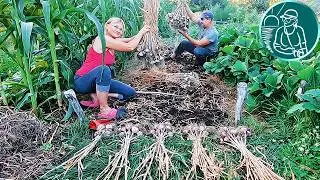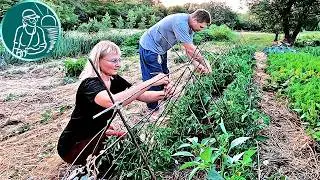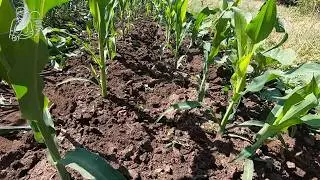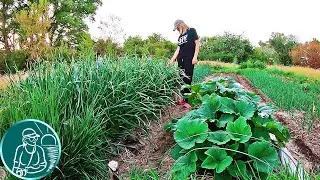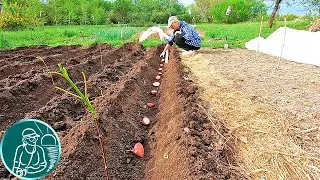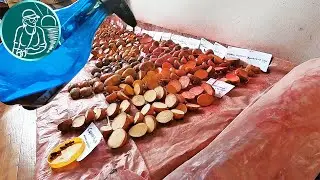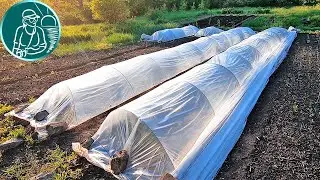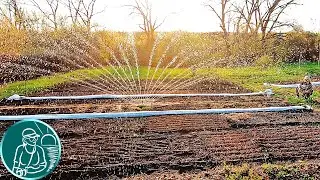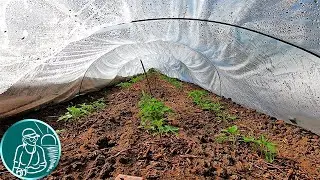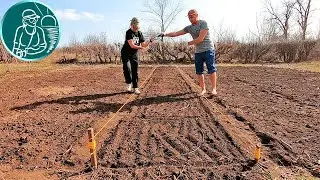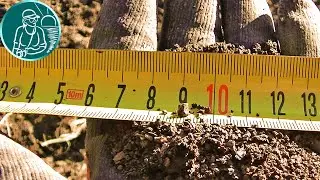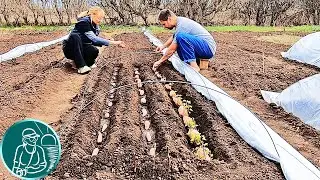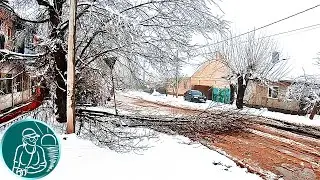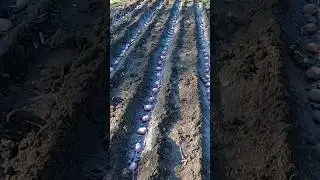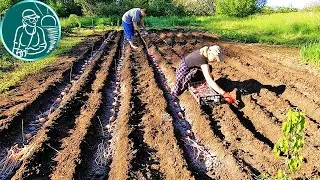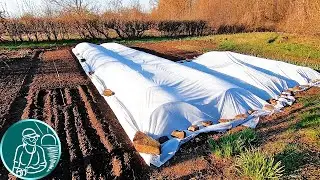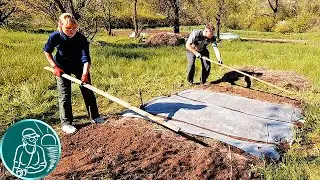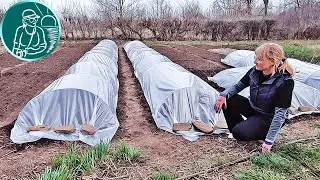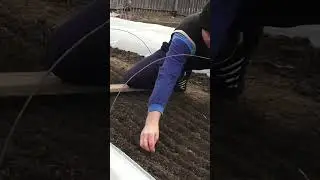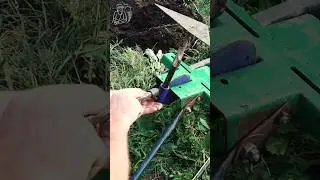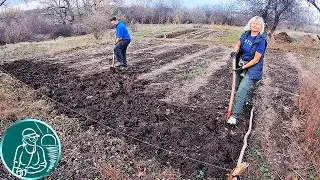🌱 DIY greenhouses for growing tomatoes without seedlings 🍅 Seedless tomatoes
🔥►►Help the channel - donate: https://www.donationalerts.com/r/gord... ► BTC: 1MPHxbhGXaotXhkBU5rCRpfK9npMDoWVBg 🌱 Growing heat-loving plants without seedlings: tomato, sweet potato, pepper, eggplant, cucumbers, zucchini. Series 1: we make and install a greenhouse from plastic film with our own hands. Seedless growing technology for beginners step by step.
📖 Video content:
00:00 Making a greenhouse without welding polyethylene.
00:06 A series of films about the seedless cultivation of heat-loving plants.
00:18 The main dimensions of a conventional greenhouse of our design.
00:21 Unwind and cut off a piece of waterproof tape.
00:22 Heat-loving plants for which we make greenhouses.
00:29 About a new method of making greenhouse sides.
00:37 We glue the plastic film at a short distance from the edge of the film.
00:42 The main differences between the new greenhouses and our regular greenhouses.
00:45 You can do without thermal welding of polyethylene.
00:50 You don’t need a soldering iron or a special tip for welding.
00:55 You can do without cutting the polyethylene.
01:00 No special equipment needed.
01:22 With a pressure ruler it’s easier to do without markings.
01:28 A greenhouse canvas without a fold turns out wider.
01:42 A short length of waterproof tape is enough.
01:55 Greenhouses without welding are slightly more difficult to manufacture.
02:44 For a mini-greenhouse, gluing the sides with tape is not necessary.
03:01 Method of attaching bead wire to polyethylene.
03:08 We are installing new greenhouses in the garden.
03:15 Why we didn’t use a soldering iron.
03:24 Second half of March.
04:06 Snow apocalypse at the end of March and beginning of April.
06:06 We lived without electricity for 12 days.
06:47 Properties of finished greenhouse sides.
07:09 Insert the bead wire.
07:18 Loop to protect polyethylene.
07:55 Preparing the soil with a deep cultivator.
07:59 Harrowing with a rake until the snow apocalypse.
08:08 We loosen only if the soil is ready for cultivation.
08:17 Homemade ripper made from broken forks.
08:22 The rake does not provide the functionality we need.
08:25 A deep ripper solves many problems.
08:32 Convenient and light layer of soil for sowing tools.
08:36 We have heavy clay soil that is prone to compaction.
08:41 Making the optimal structure and density of the soil.
08:56 Combing out the roots of perennial weeds.
09:03 We damage the thread-like shoots of weed seeds.
09:15 We disrupt the activity of soil pests like mole crickets.
09:46 Installing arcs for greenhouses.
09:50 Are greenhouses necessary for heat-loving plants?
10:10 Why do we need greenhouses in the southern steppe climate?
10:47 Our region is the Rostov/Lugansk steppes.
10:52 Our climate - temperatures in spring, summer and autumn.
11:21 An example of the temperature range in the second half of March.
11:31 Our growing technologies are for the risky farming zone.
11:44 Greenhouses help to get the temperature of seed germination earlier.
11:52 Table of germination temperatures for common vegetables.
12:17 Greenhouse fabric material - polyethylene is better than spunbond.
13:35 We carry the greenhouse sheet to the installation site.
14:02 We cover the beds with arcs with a greenhouse cloth.
14:36 We insert stakes on one side of the greenhouses.
14:47 We seal one edge of the greenhouses with soil after fixing them with stakes.
14:57 In the installation, greenhouses without welding polyethylene behave like welded ones.
15:04 We fix the opposite edges of the closed greenhouses with stakes.
15:28 We have all the films with details of the manufacture and installation of greenhouses.
15:40 We have all the films about growing seedlings in greenhouses
15:53 All data on greenhouse materials is in a separate film.
16:02 Briefly the main materials and their characteristics.
16:06 Polyethylene film 50-130 microns for a total of 1 or 2 layers.
16:49 The greenhouse arcs are galvanized steel wire with a diameter of 4 mm.
16:57 Bead wire - galvanized steel wire with a diameter of 3 mm.
17:02 The stakes are galvanized steel wire with a diameter of 5 mm.
17:47 Subscription reminder.
17:50 Dimensions of the main structure of our greenhouses - part 1.
18:03 Wishes for sharing experience in the comments.
18:04 Dimensions of the main structure of our greenhouses - part 2.
18:47 End of the film.
► All our films about seedlings and greenhouses, including the technology of mass growing of seedlings, from drawing/making greenhouses and collecting/preparing seeds, to caring for seedlings and preparing for planting/trading, here: / playlist ?list=PLbFIe_G0gp05wMQ7TtN7qI3BMkEOiw5t_

